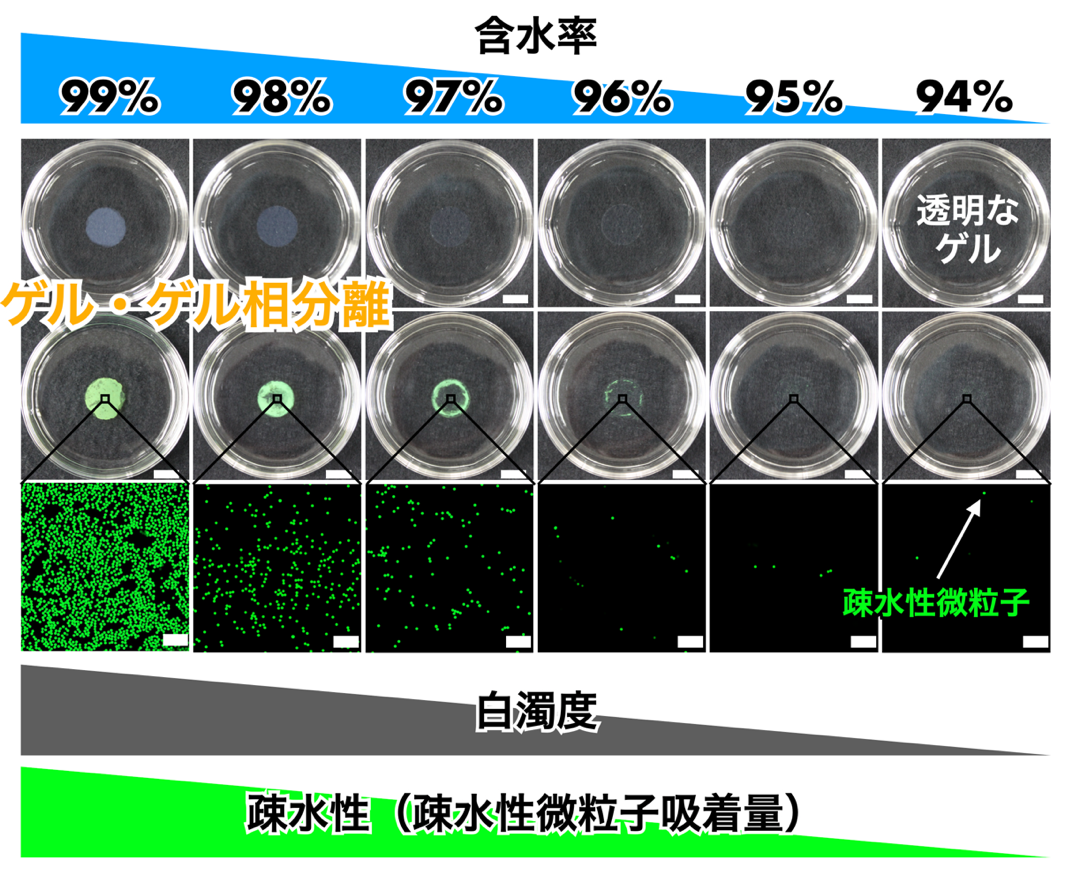DATE2023.10.31 #Press Releases
Percolation-induced gel–gel phase separation in a dilute polymer network
Disclaimer: machine translated by DeepL which may contain errors.
--Possibility of innovative scaffold materials that can regenerate living tissue in situ--
The University of Tokyo
RIKEN
Hokkaido University
Japan Science and Technology Agency (JST)
Summary of Presentations
Professor Takamasa Sakai, Assistant Professor Shohei Ishikawa, and Associate Professor Naoyuki Sakumichi of the Graduate School of Engineering, the University of Tokyo, Associate Professor Hironori Hojo of the Graduate School of Medicine, the University of Tokyo, and Team Leader Yasushi Okada of RIKEN Center for Biosystems Dynamics Research (Professor, School of Medicine of the University of Tokyo and School of Science, the University of Tokyo), Associate Professor Li Xiang of the Graduate School of Advanced Biosciences, Hokkaido University, and his research group have discovered a new phase separation phenomenon called Gel-Gel Phase Separation (GGPS) in PEG hydrogels, in which the mesh of polyethylene glycol (PEG), a water-soluble polymer, holds a large amount of water. Gel-Gel Phase Separation (GGPS), a new phase separation phenomenon, has been discovered in PEG hydrogels. Hydrogel (hereinafter abbreviated as "gel") is a solid material that contains a large amount of water, and is a familiar material used in food products such as jelly and agar, as well as in medical devices such as soft contact lenses and hemostatic agents. Gel-gel phase separation was induced by the efficient creation of gel in a state containing a large amount of water with a water content of about 99%. The gel-gel phase separation resulted in the formation of a "gel-gel phase-separated material" with a sponge-like structure similar to an extracellular matrix, consisting of a fibrous network of about 100 µm thick gel within a dilute gel. Surprisingly, the gel-gel phase-separated material showed hydrophobic properties (Figure). However, there has been no observation of the spontaneous formation process of hydrophobic sponge structures such as those discovered in this study. Furthermore, when the gel-gel phase-separation material was implanted under the skin of a model animal, cells entered from the surrounding area and formed adipose tissue including blood vessels. Such specific tissue affinity is completely absent in conventional PEG gels. These results demonstrate the potential of PEG gel as a scaffold material for in vivo cell penetration and in-situ tissue regeneration. The research results will be published online in Nature Materials.
 As the amount of water included in the gel preparation is increased, phase separation progresses and the gel becomes cloudy and adsorbs more hydrophobic particles
As the amount of water included in the gel preparation is increased, phase separation progresses and the gel becomes cloudy and adsorbs more hydrophobic particles
For more information, please visit the website of the School of Engineering, The University of Tokyo.
Journals
-
Journal name Nature MaterialsTitle of paper Percolation-induced gel-gel phase separation in a dilute polymer networkDOI


